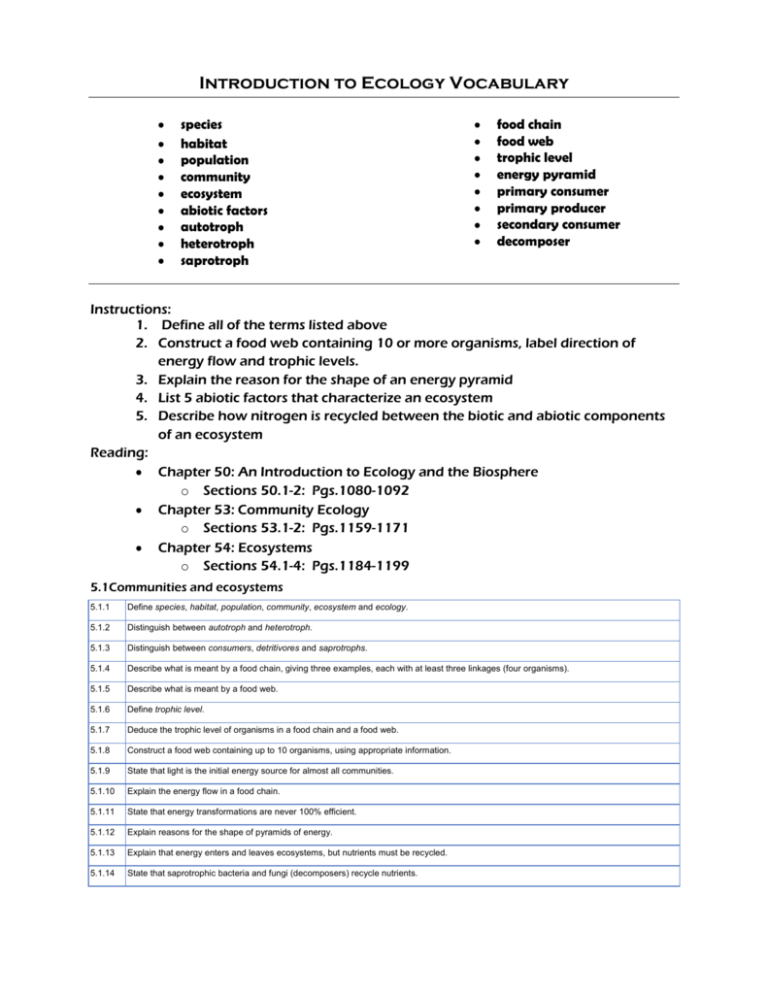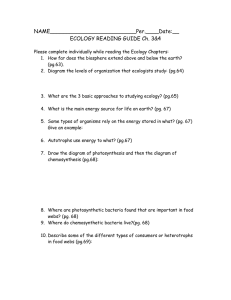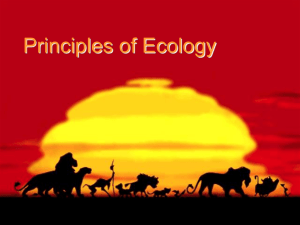Introduction to Ecology Vocabulary
advertisement

Introduction to Ecology Vocabulary species habitat population community ecosystem abiotic factors autotroph heterotroph saprotroph food chain food web trophic level energy pyramid primary consumer primary producer secondary consumer decomposer Instructions: 1. Define all of the terms listed above 2. Construct a food web containing 10 or more organisms, label direction of energy flow and trophic levels. 3. Explain the reason for the shape of an energy pyramid 4. List 5 abiotic factors that characterize an ecosystem 5. Describe how nitrogen is recycled between the biotic and abiotic components of an ecosystem Reading: Chapter 50: An Introduction to Ecology and the Biosphere o Sections 50.1-2: Pgs.1080-1092 Chapter 53: Community Ecology o Sections 53.1-2: Pgs.1159-1171 Chapter 54: Ecosystems o Sections 54.1-4: Pgs.1184-1199 5.1Communities and ecosystems 5.1.1 Define species, habitat, population, community, ecosystem and ecology. 5.1.2 Distinguish between autotroph and heterotroph. 5.1.3 Distinguish between consumers, detritivores and saprotrophs. 5.1.4 Describe what is meant by a food chain, giving three examples, each with at least three linkages (four organisms). 5.1.5 Describe what is meant by a food web. 5.1.6 Define trophic level. 5.1.7 Deduce the trophic level of organisms in a food chain and a food web. 5.1.8 Construct a food web containing up to 10 organisms, using appropriate information. 5.1.9 State that light is the initial energy source for almost all communities. 5.1.10 Explain the energy flow in a food chain. 5.1.11 State that energy transformations are never 100% efficient. 5.1.12 Explain reasons for the shape of pyramids of energy. 5.1.13 Explain that energy enters and leaves ecosystems, but nutrients must be recycled. 5.1.14 State that saprotrophic bacteria and fungi (decomposers) recycle nutrients.











